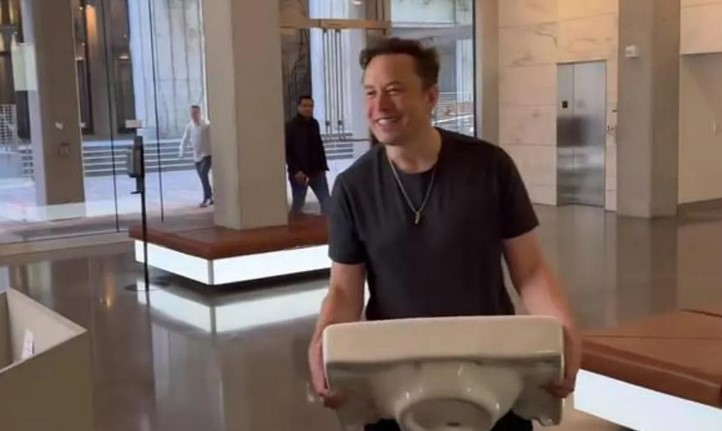Virendra Pandit
New Delhi: After keeping Twitter, Inc., on tenterhooks for seven months, facing high-profile public and legal wrangling, and a saga of twists and turns in the USD 44 billion acquisition deal, Tesla Motors and SpaceX chief Elon Musk finally acquired the microblogging platform on Thursday—and promptly terminated its CEO Parag Agrawal, CFO Ned Segal, and legal affairs and policy chief Vijaya Gadde, among others, from the top leadership of the firm.
The world’s wealthiest man, with a net worth of over USD 220 billion, had accused them of misleading him and Twitter investors over the number of fake accounts on the social networking platform. Agrawal and Segal were in Twitter’s San Francisco headquarters when the deal closed and were ‘escorted out’, the media reported.
Now, Musk plans to assume the role of Twitter’s CEO as well. He might bring immediate disruption to Twitter’s operations, in part because many of his ideas for how to change the company are at odds with how it has been run for years. He wants to ensure “free speech” on Twitter, which might threaten to undo years of its efforts to reduce bullying and abuse on the microblogging platform and potentially turn it into a global site enabling the users to wash their dirty linen.
About the future of the platform, however, he told advertisers in an open letter on Thursday that Twitter obviously cannot become a free-for-all hellscape, where anything can be said with no consequences!”
Twitter employees have since April been bracing for massive layoffs after some potential investors were told Musk plans to cut three-fourths of the 7,500 workforce and expects to double revenue within three years. But, on Wednesday, he told employees he doesn’t plan to cut 75 percent of the staff.
As the October 28 deadline of the acquisition neared, Musk began putting his stamp on the company, posting a video of himself walking into the Twitter headquarters with a porcelain kitchen sink, tweeting “let that sink in,” and changing his profile descriptor on the platform he now owns to “Chief Twit.”
Recently, Musk said he wanted to “defeat” spam bots on Twitter, make the algorithms that determine they presented how content to its users publicly available, and prevent the platform from becoming an echo chamber for hate and division, even as he limits censorship. He also said on Thursday he did not buy Twitter to make more money but “to try to help humanity, whom I love.”
The USD 44-billion mega-acquisition is the culmination of a remarkable saga, full of twists and turns, that sowed doubt over whether Musk would complete the deal. It began on April 4, with Musk disclosing a 9.2 percent stake in the company, making him its largest shareholder.
He then agreed to join Twitter’s board, only to pull out at the last minute, and offered to buy the company instead for USD 54.20 per share. Late in April, the two sides reached a deal at the price he suggested. This happened without Musk carrying out any due diligence on the company’s confidential information, as is customary in an acquisition.
In the weeks that followed, however, Musk complained publicly that he believed Twitter’s spam accounts were significantly higher than the platform’s estimate, published in regulatory filings, of less than 5 percent of its monetizable daily active users. His lawyers then accused Twitter of not complying with his requests for information on the subject.
The acrimony resulted in Musk giving notice to Twitter on July 8 that he was ending their deal because the platform misled him about the bots and did not cooperate with him. Four days later, Twitter sued Musk in Delaware, where the company is incorporated, to force him to complete the deal.
After a lot of heat and dust, Musk, on October 4, took another U-turn and offered to complete the deal. The Delaware judge gave him an October 28 deadline to close the transaction and avoid the trial.
He also showed he saw Twitter as a foundation for creating a “super app” offering everything from money transfers to shopping and ride-hailing.
“The long-term potential for Twitter in my view is an order of magnitude greater than its current value,” Musk said on Tesla’s call with analysts on October 19.
In May, Musk had said he would reverse the ban on Donald Trump, who was removed from Twitter after the attack on the US Capitol, although the former US President said he won’t return to the platform. He has instead launched his own social media app, Truth Social.

